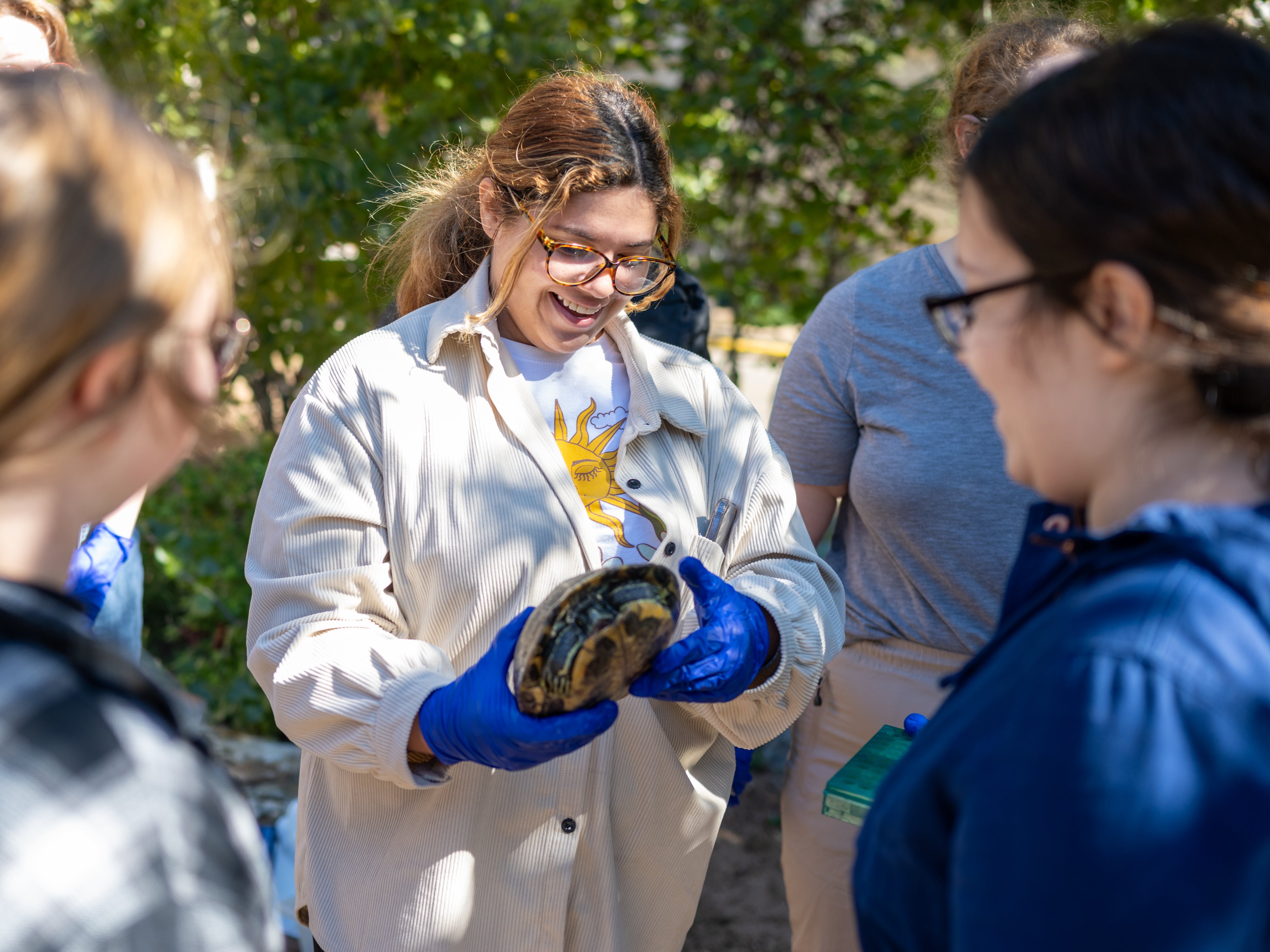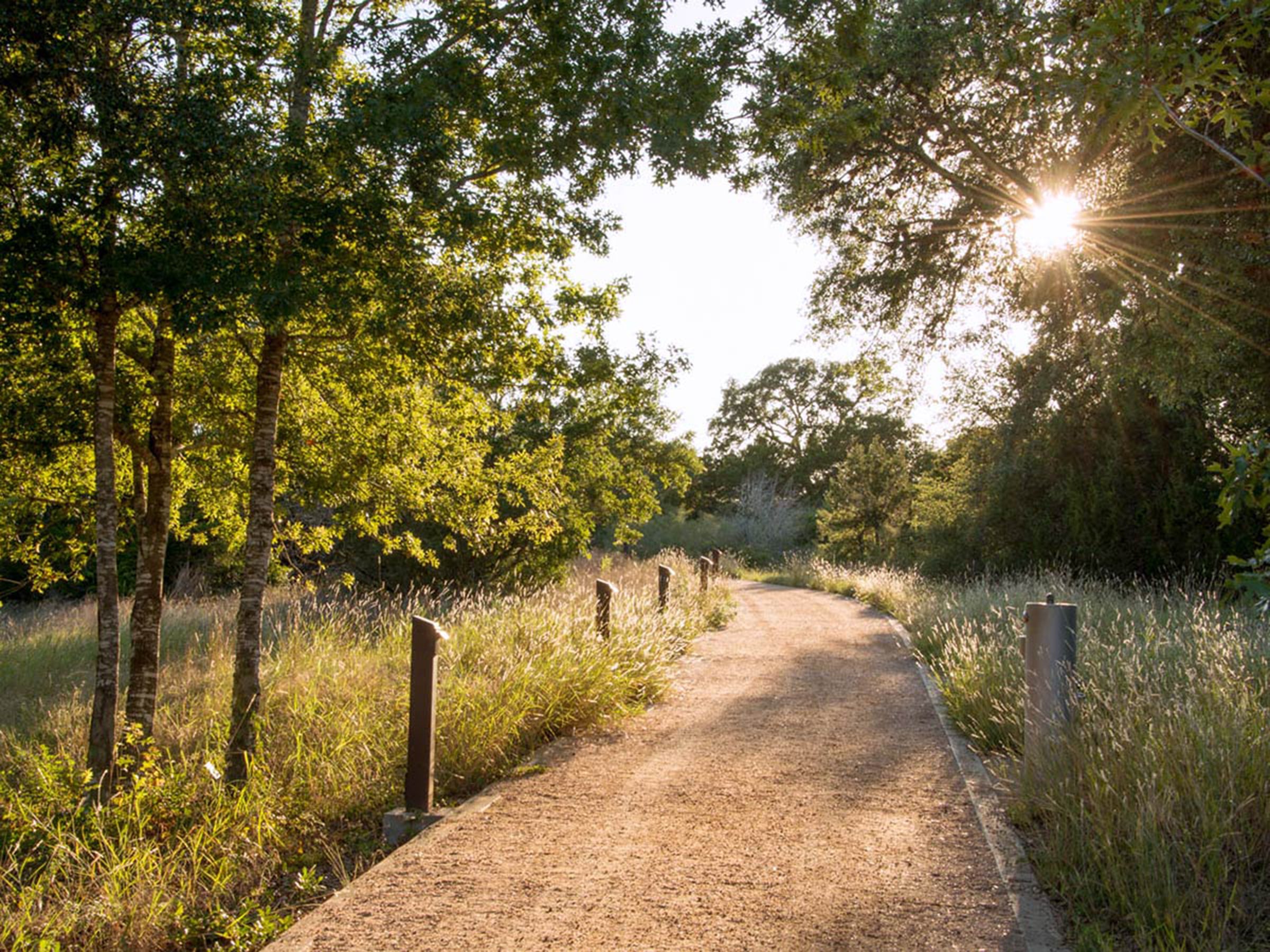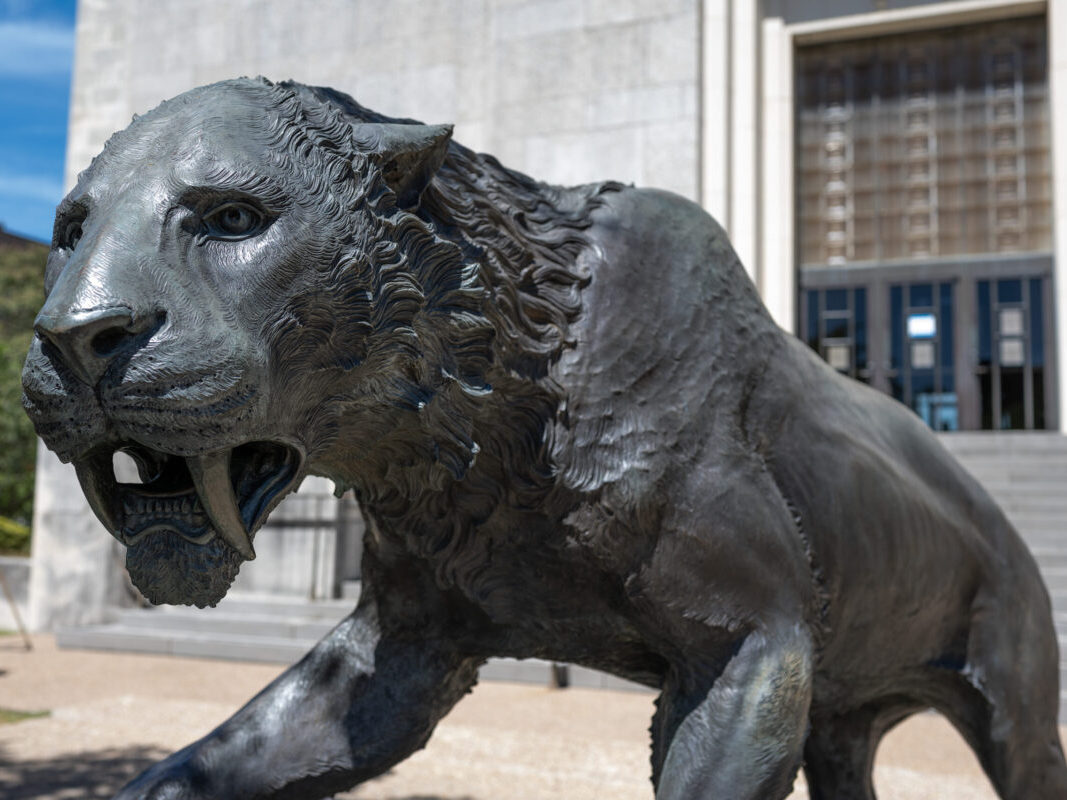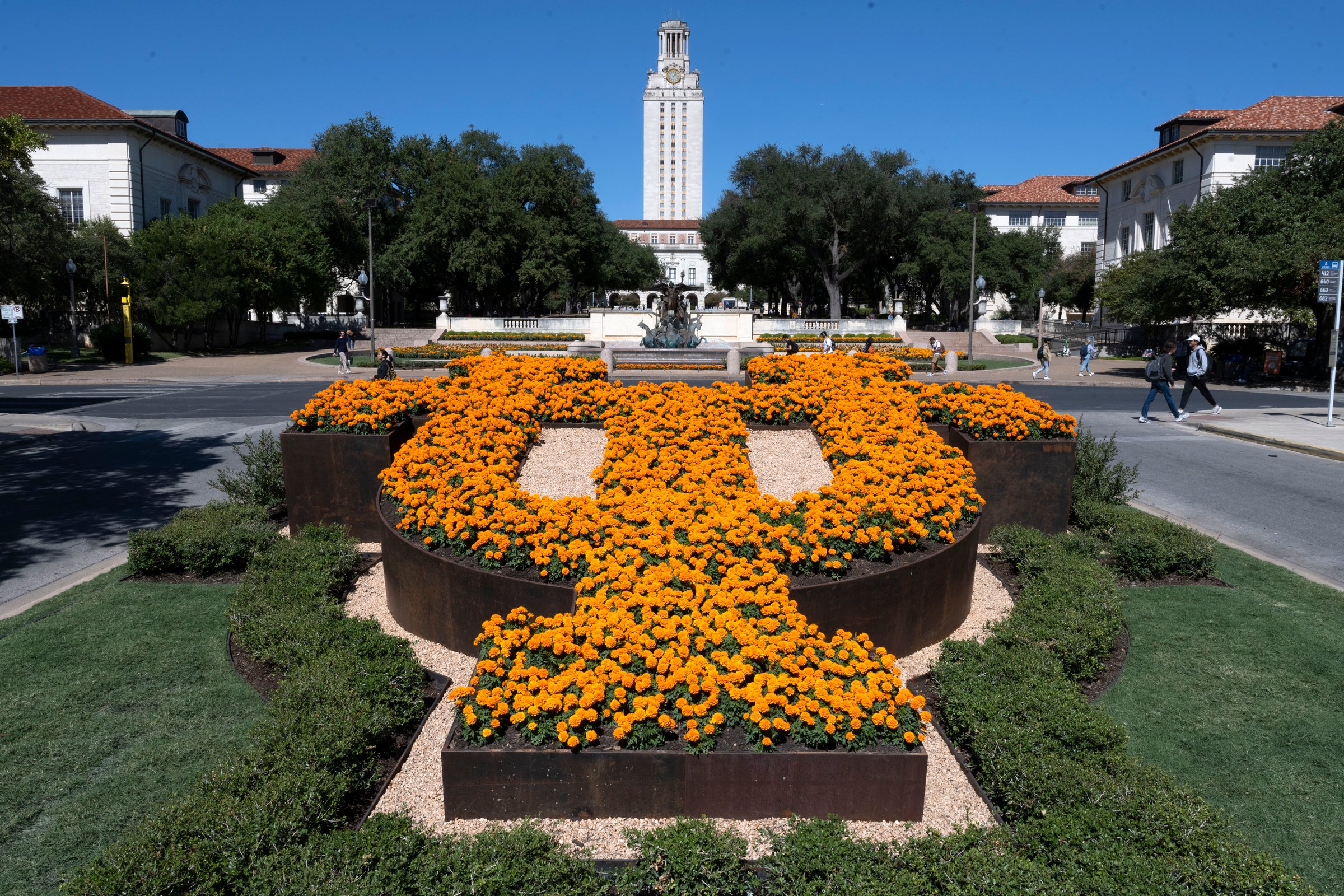Take a Tour of UT Through the Lens of Science
Spots that are a part of The University of Texas at Austin can serve purposes for both science learning and community R&R.

North of the UT Tower, the turtle pond is inviting for wildlife and student researchers alike. Credit: Nolan Zunk
The University of Texas at Austin is known for both its research excellence and its vibrant campus, but these two distinctions aren’t necessarily separate. At UT, scientific research isn’t all secluded in underground labs (though that happens, too). Rather, it occurs all around campus.
Here are scientifically significant spots on campus you can experience for yourself.

Students work with faculty member Justin Havird to conduct research.
UT Turtle Pond
At the pond, you’ll see both turtles and students basking in the Texan sun. But while it’s a great spot to relax, it also serves as a space for biology students to engage in hands-on biodiversity research as part of projects. Student researchers in the Ecology, Evolution and Behavior club are working on identifying the microbes on the turtles to better understand the turtles’ health. The pond is a living laboratory, a rich resource for biology researchers interested in sampling the pond’s water, collecting algae or analyzing microbes. For the rest of us, enjoying the sights without disturbing the wildlife is the way to go.

The Painter Hall telescope is shown on a night when the UT Tower is lit up for a championship.
Telescopes on PMA and Painter
Have you ever looked up at the night sky, marveled at the bright stars dotting the sky, and wished you could get a closer glimpse of them? You don’t have to become an astronomer to fulfill your dreams. Star Parties hosted by the Department of Astronomy bring the UT community together on Wednesday nights at the PMA and Friday and Saturday nights at Painter Hall. Neither telescope is used for research, but outreach plays a big role in astronomy. Allowing visitors to observe the moon, planets and bright star clusters, these telescopes offer an otherworldly experience.

A botanical specimen from Charles Darwin’s expedition to the Galapagos Islands in 1835 is housed within the Billie L. Turner Plant Resource Center.
Billie L. Turner Plant Resources Center
The UT Tower is an iconic landmark, especially when bathed in an orange glow. While it has an impressive exterior, budding botanists will delight in the herbarium housed inside. The 13th-largest herbarium in the nation, it houses a wide range of specimens, including plants from the sunflower family and multiple angiosperm families. The herbarium is open to everyone, from professional researchers to aspiring naturalists, enriching the education of many students.

A path cuts through the arboretum in the Lady Bird Johnson Wildflower Center.
Lady Bird Johnson Wildflower Center
Located about 30 minutes’ away from the main campus, the center, a part of the College of Natural Sciences, is dedicated to the conservation of native plants and offers classes for the public on forest bathing, plant propagation and more. The center also allows environmental research to flourish. For example, ecologists have been using 70 acres of the center to study how prescribed fire affects Central Texas ecosystems for more than 20 years. This research paved the way for the creation of a native turfgrass which requires less watering and mowing than traditional turf grasses. If you want a change of scenery while still staying connected to UT, check out the Wildflower Center, which is free to enter with your UT ID.

A sabertooth statue greets visitors to the campus museum where visitors learn about the natural world.
Texas Science and Natural History Museum
In the Forty Acres space once known as Texas Memorial Museum, there are new exhibits that highlight the contributions of researchers, including folks currently in the College of Natural Sciences. Learn about alumni and faculty from astronomy and biology and their scientific discoveries in the first-floor Texas Transformation Gallery. See art displays made possible with contributions from the UT entomology collections and graduate students and faculty across the college, in and near the front entryway. Find out how textiles and apparel students and faculty are planning for sustainable fashion in the “Particles of Color” exhibit on the fourth floor. And be sure to drop by the new Big Eye on Dark Skies exhibit, which is set to open later this month and will highlight work underway to explore the universe using the UT McDonald Observatory’s Hobby-Eberly Telescope. Bring your UT ID for free entry.
For more about places and spaces around the college, check out this round-up, plus our list of recommended study spots.



